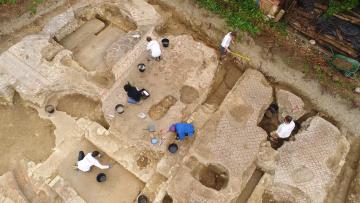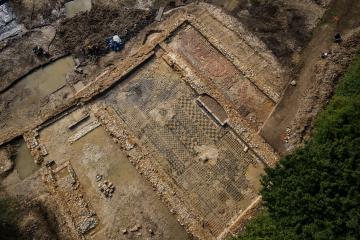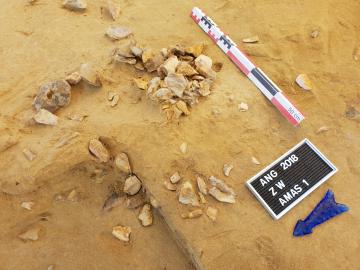You are here
News
- (-) Remove Discoveries filter Discoveries
In 2002, the National Institute for Preventive Archaeology (INRAP) discovered the Genevray site on the route of the future Thonon-les-Bains bypass in Haute-Savoie. An evaluation was authorised and curated by the archaeology service of the DRAC de Rhônes-Alpes.
An Inrap team has recently discovered a sanctuary dedicated to the god Mithra at the site of Mariana, in Lucciana (Haute-Corse).
The archaeologists have recently uncovered large mosaics that are part of two Antique buildings.
Elimberris is situated on the right bank of the Gers, today just below the modern urban center. Across 800 m², the excavation revealed the first human settlements dated to the second half of the 1st century BC.
At Saint-Martin-d’Hardinghem, in advance of the construction of flood retention basins in the Aa river valley, Inrap excavated, in partnership with the Department of Pas-de-Calais, part of the country residence of the bishops of Thérouanne, dated to the High Middle Ages. The archaeologists uncovered 200 m² of decorated pavements, all of which are very well preserved, which is rare.
Since April 2017, an Inrap team has been excavating, under State (Drac, Normandy) curation, a quarry site at Alizay-Igoville (Eure) exploited by Cemex Granulats and Lafarge Granulats France.
A ritual Jewish bath, a mikveh, may have been located a cellar in Saint-Paul-Trois-Châteaux (Drôme). The city entrusted the study of this cellar to an Inrap team.
This excavation, conducted since the month of April by team of Inrap archaeologists, has revealed three prehistoric occupations dated from the Final Paleolithic to the Mesolithic, as well as a rare sedimentary sequence.









